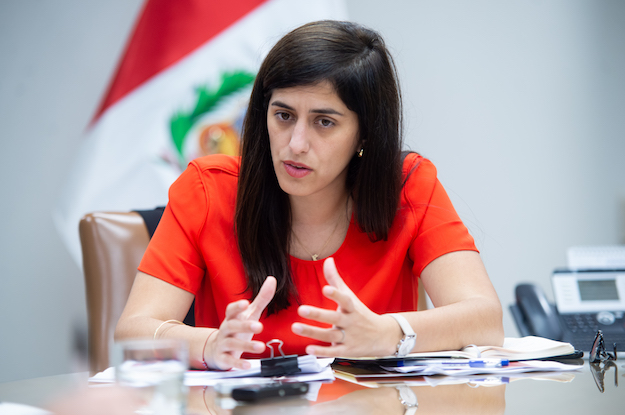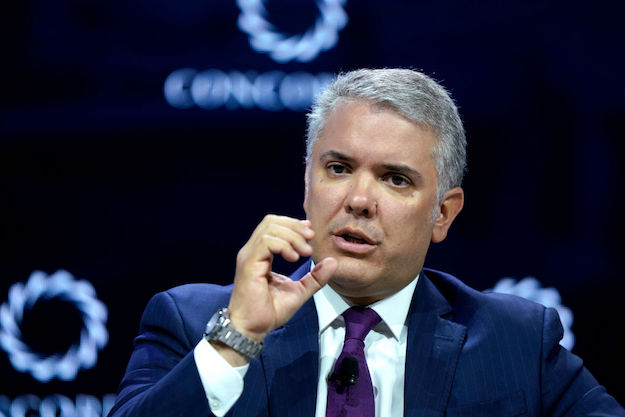BUENOS AIRES – “Hope for the best, plan for the worst,” the old expression goes.
It didn’t happen in Argentina, though.
The unexpected result of the Aug. 11 primary, which favored the opposition in a conclusive way, triggered the government’s worst nightmare: a market panic, which fed back into the crisis and further reduced President Mauricio Macri’s already thin chances of re-election. As a result, the country entered a three-month-long standoff that reinforced the natural short-termism of Argentine politics – and laid bare the fact that no one quite knows what to do next.
For Macri’s government, success is measured in days of survival; costs are measured only up to the scheduled end of his term on Dec. 10. For the likely next president Alberto Fernández and the rest of Argentina’s opposition, the crisis is their ticket to power and a means to force Macri to anticipate politically costly measures such as currency controls, credit events or central bank financing of the treasury. For the country, the transition is played as an agency problem where political principals wrestle to the death at the expense of the people.
In this scenario, attention has moved beyond the anti-climactic Oct. 27 election to the more pressing question of laying out a roadmap for the next several months. This task is complicated by the reality that Argentina’s International Monetary Fund (IMF) program was ill-designed and failed to stabilize the economy – and that financial crises are, by definition, unstable.
The tradeoffs of a debt restructuring
Sorting out the debt issue may not be enough for Argentina to solve its growth problem – as a reference, per capita GDP in 2019 is now roughly the same as it was in 2009. But it is certainly a necessary condition. For starters, the debt crisis is the main factor behind the exchange rate pressure that fuels inflation, and the high financing costs that discourage private investment – the only remaining real potential engine for growth.
Kicking the debt-can forward, as the government did with the partial extension of short-term debt maturities on Aug. 28 – a selective default that, by unexpectedly including local-currency debt, almost froze the local money market – may have responded to financing needs. But it also reflected the current political stalemate, as the move simply bunched obligations at the beginning of the new administration. In any case, both the government and the opposition, as well as market players in general, have recognized that something needs to be done to alleviate debt service in the near term. The many options can be broadly grouped into three camps based on past models:
Option 1: Uruguay 2003. A voluntary debt exchange with the endorsement of Congress, which may or may not come with a haircut to nominal value. This would be sponsored by an IMF Extended Fund Facility (EFF). With a less onerous financial program, the new government may negotiate a smaller, more realistic fiscal adjustment than in the original IMF arrangement.
Option 2: Argentina 2002. A traditional default followed by a debt exchange with significant debt relief, after a protracted negotiation with creditors – and with the IMF. This option would extend the economic costs of the financial crisis well beyond 2020.
Option 3: Screw the locals. A unilateral restructuring of sovereign debt under local law only, with a presidential decree, possibly validated by Congress, that eludes (or postpones) a long negotiation, at the political cost of bailing in local bondholders to bail out external creditors.
A priori, there are reasons why Fernández may lean towards Option 1. He himself said on Sept. 26 that Uruguay’s example would “not be that difficult” to follow. Moreover, in similar contexts (Uruguay 2003; Ukraine 2015), EFF applicants were required by the IMF to seek a larger debt relief than what was proposed (and ultimately implemented) by the countries themselves. After all, the IMF cares less about the country’s welfare than about getting paid first. In Argentina, the IMF will be the only remaining source of external financing in 2020; it is therefore likely to pursue a similar strategy, as soon as a new team is in place. An extended debt struggle is not the best way to start 2021, a mid-term election year, particularly if Fernández needs to score some early points to consolidate the support of moderate Peronist governors and keep the most radical elements of his coalition at bay. Against that backdrop, a quick reprofiling that inhibits the IMF from requesting deeper haircuts and paves the way for an early, albeit modest, recovery in late 2020 looks attractive.
Any restructuring involves a tradeoff between time and size. While a quick negotiation may fall short of what is needed to ensure solvency, a slow negotiation may delay a rebound and deepen the economic damage, offsetting any additional debt relief – while compromising the 2021 election. But there are always implementation risks; many things can go wrong in a deal so complex, delaying or even derailing an agreement. That includes the fact that private creditors may prefer to wait for a new IMF program before sitting at the bargaining table, a true Catch-22 for a swift resolution of the debt burden problem.
In short, a quick deal looks at first like a reasonable – but challenging – bet.
And that is only one side of the problem.
The financial crisis is real
For all the attention bonds and creditors will hold in the next months, a careful look at the numbers shows that the longer-term stabilization of the debt-to-GDP ratio lies less in the numerator (the debt) than in the denominator (the GDP, a standard proxy for the country’s ability to pay).
By the end of 2019, the debt-to-GDP ratio will be, give or take, approximately 80%. Of this, about 32% is held by the public sector (and should be netted out), 19% is with official or bilateral creditors (and, while non-defaultable, should be easy to roll over at a reasonable cost) and only 29% is with private creditors (roughly two-thirds of which was issued in foreign currency under foreign law). On the other hand, 71% of the debt with private creditors maturing within the next four years is under local law. All things considered, with a primary fiscal balance and a moderate growth rate, a reprofiled debt service flow looks manageable.
The main problem is with the denominator: Argentina’s GDP will fall this year and the next. Even if the debt is fully rolled over, if it grows with its average interest rate (above 5%), and the GDP falls, the country needs an unrealistically high primary fiscal surplus to make the debt ratio sustainable. Sound familiar? It is the same debt overhang pattern of the “lost” Latin American decade of the 1980s: a large debt ratio inhibiting investment, because today’s debt is tomorrow’s tax; a lack of investment slowing down growth; and a lack of growth causing the debt ratio to rise.
With no room for a fiscal impulse or a salary boost, and with exports that, at best, will continue to grow at a modest rate, the only candidate to get some momentum in the real economy is domestic private investment – with foreign investment possibly following later.
Comparisons with 2003, though tired, are useful on this point. Back then, before the China-driven commodity boom gained strength, Argentina saw a massive transfer of income to the business sector, thanks to “pesification” (the compulsory conversion of dollar debt to the local currency at below-market rates). This was coupled with private debt restructuring, a freeze in utility rates and real wage cuts, the protection of an exorbitant real exchange rate and a policy of negative real interest rates. All of this brought companies’ profitability to unprecedented levels and helped fund a credit-less investment boom.
In 2020, there is no room for utility rate cuts – indeed, the government’s last-day-on-Earth approach shelved a few increases scheduled for 2019. While the exchange rate is only at the 2010 average, another real devaluation may backfire; unlike in deflationary 2001, today inflation is queen and the pass-through to prices is intense. As for the employment boom and the onshoring of dollarized savings blessed by the income effect of the 2002 devaluation – two additional steroids that drove the 2003 Argentine “miracle” – this time is different: employment fell much less than in 2001-2002 (courtesy of a deep real wage adjustment), and savings may actually move in reverse, if expectations of an increase in wealth taxes are to be believed. There is the silver lining of the Vaca Muerta shale formation and large and long overdue mining projects, but none of these are the golden goose that Fernández and his team dream about.
In sum, there is no 2003 around the corner. Argentina has a growth problem that will take years of good policies – not just macroeconomic ones – to work through. In the meantime, the benign outlook is a moderate government muddling through transition years to rekindle investor’s broken confidence and trust without losing political support. The not-so-benign outlook is electoral anxiety: a flush of subsidies, directed loans and tax exemptions with high media impact and low real impact at the expense of true growth policies and fiscal austerity.
I leave it to the reader to assign the odds and place the bets.
—
Levy-Yeyati is the dean of the School of Government of Universidad Torcuato Di Tella, the founder and Academic Director of the Center for Evidence-based Policy (CEPE-Di Tella) and a visiting professor of public policy at Harvard’s Kennedy School of Government. He is also the founding partner of Elypsis, an economic research firm in Argentina.









